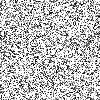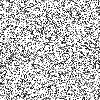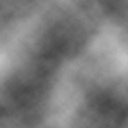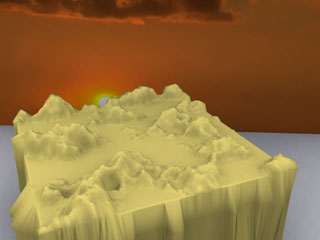ARTST 102 Algorithmic Visualization
Michael Nicolayeff
Pearl in Noise
Research Topic
Perlin Noise
Description
|
|||||
| Originally created in 1983,
one aspect of Perlin noise that made it useful in earlier days of
CGI was that its file size is virtually naught compared to that
of bitmap based textures. Computers in those days had incredibly
small hard drive and memory sizes compared to what is available
today, so this was a major issue, especially for large rendered
areas where tiling of a texture map would be obvious without exceptionally
large bitmaps. |
|||||
|
|||||
| Since it is so common to double frequencies
and half the amplitudes when adding noise waves, each successive
noise function is referred to as an octave. Also, to make
things simpler, one variable is used to determine the amplitudes
and frequencies, which is referred to as persistence. The
term was originally created by Benoit Mandelbrot who defined noise
with high frequency as having low persistence. |
|||||
| By applying equations
to the composite waves, one can simulate a variety of natural surfaces,
such as fire, marble, and wood. This effect works even better when
the noise is calculated for 3 dimensions instead of two, which can
be used as a texture without having to worry about UVW coordinates.
Instead, the object acts as if it were carved out of the generated
material. |
|
||||
| Additionally, when used in combination
with filters in Photoshop and similar programs, noise can be used
as a starting point for bitmapped textures. For example, noise +
the cross hatch filter can quickly create a scratched glass texture.
Or, one could use low density nose with the smudge tool to create
stubble for a character's face map. |
|||||
| Finally, noise can be used with displacement and bump mapping to simulate landscapes, and to make rendered surfaces appear rougher and thus more detailed than the original geometry. This is done by using a 2d version of the function then having a 3d modeling program use the lights and darks of the noise to tell the program what to make higher and what to make lower. |
|
||||
Making Noise - Ken Perlin
References/Links
Perlin
Noise - Hugo Elias
Making Noise - Ken
Perlin
Hardware Perlin Noise
Demonstration - Paul R. Dunn




